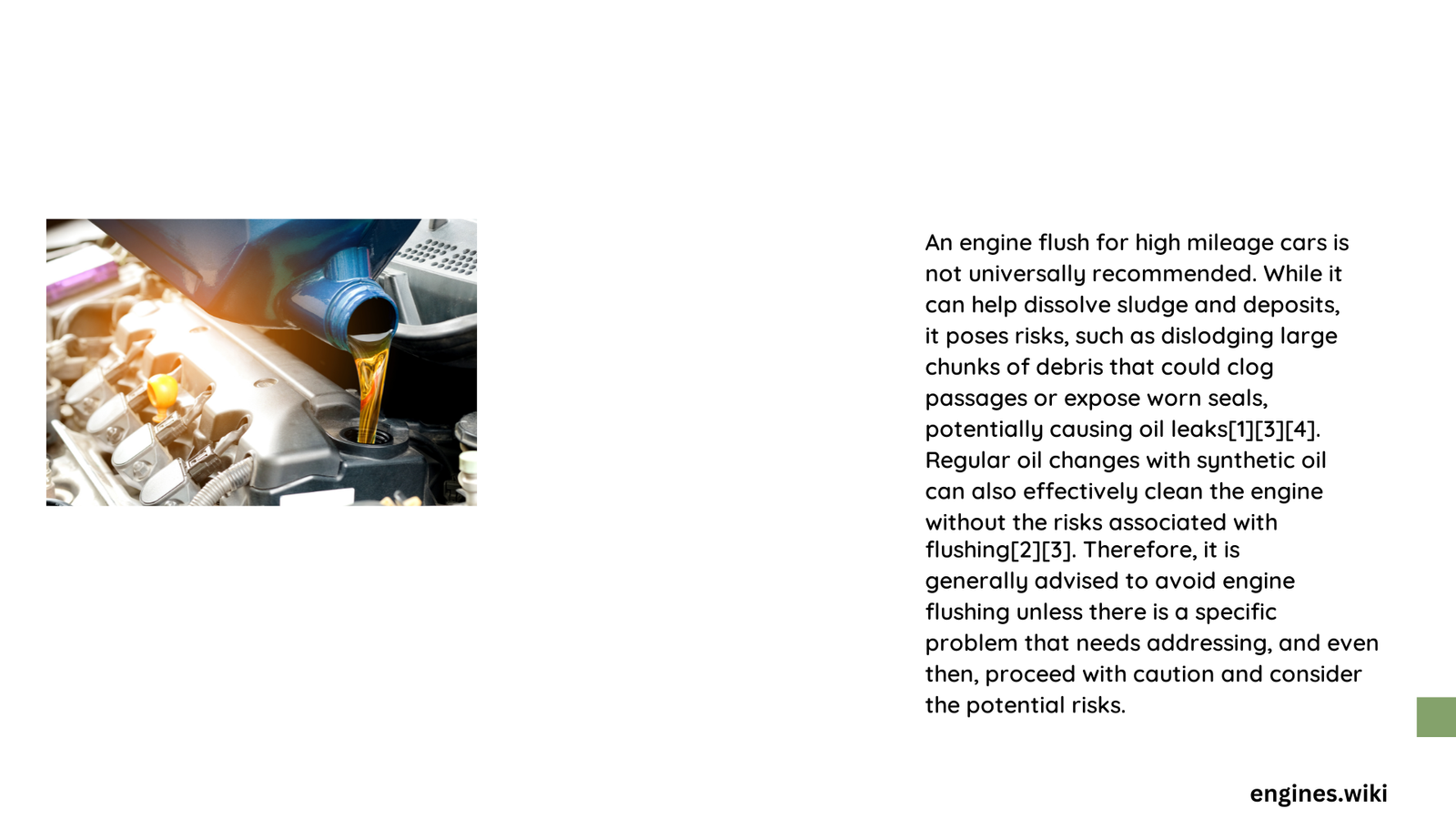High mileage vehicles demand careful maintenance, and engine flush remains a controversial topic among automotive experts. While some professionals argue it can help remove harmful sludge and improve engine performance, others warn about potential risks like seal damage and clogged oil passages. Understanding the nuanced approach to engine maintenance is crucial for preserving your vehicle’s longevity and performance.
What Happens Inside High Mileage Engines?
As vehicles accumulate miles, engine components experience significant wear and tear. Sludge, carbon deposits, and microscopic debris gradually accumulate, potentially compromising engine efficiency. An engine flush aims to address these issues by using specialized chemical solutions to dislodge and remove these accumulated contaminants.
Key Considerations for Engine Flush
| Aspect | Potential Benefit | Potential Risk |
|---|---|---|
| Sludge Removal | Improved Oil Flow | Seal Damage |
| Performance | Reduced Friction | Passage Blockage |
| Maintenance | Temporary Cleaning | Long-term Complications |
Can Engine Flush Restore Performance?

Engine flush can potentially offer several performance-related advantages:
- Sludge Elimination: Dissolves accumulated carbon and oil deposits
- Improved Lubrication: Clears blocked oil passages
- Friction Reduction: Helps restore smoother engine operation
What Are the Risks for High Mileage Vehicles?
High mileage cars present unique challenges during engine flush:
- Seal Vulnerability: Existing worn seals might fail after sludge removal
- Potential Oil Leaks: Dislodged deposits could compromise seal integrity
- Unintended Consequences: Risk of blocking critical oil passages
How to Safely Approach Engine Flush?
Experts recommend a cautious strategy:
- Consult vehicle manufacturer guidelines
- Use professional-grade, detergent-based flush products
- Consider gradual cleaning through multiple oil changes
- Monitor engine performance post-flush
When Should You Avoid Engine Flush?
Certain scenarios suggest avoiding engine flush:
- Well-maintained vehicles with regular oil changes
- Engines showing no significant performance issues
- Vehicles with known seal or gasket vulnerabilities
Recommended Maintenance Alternatives
Instead of aggressive engine flush, consider:
- Regular synthetic oil changes
- High-quality oil filter replacements
- Periodic professional engine inspections
- Using engine treatments designed for high mileage vehicles
Cost and Professional Considerations
- Average flush product cost: $10-$30
- Professional service: $50-$100
- Potential repair costs if complications arise: $500-$2,000
Expert Recommendations
Automotive professionals generally advise:
- Prioritize preventative maintenance
- Use high-quality synthetic oils
- Follow manufacturer-recommended service intervals
- Address performance issues proactively
Final Verdict: Is Engine Flush Good?
The answer depends on individual vehicle condition. While engine flush can offer benefits, it’s not a universal solution. Careful assessment, professional consultation, and a nuanced approach are essential.
Practical Tips
- Document your vehicle’s maintenance history
- Use reputable, vehicle-specific flush products
- Monitor engine performance post-treatment
- Consult certified mechanics for personalized advice
Conclusion
Engine flush for high mileage cars requires careful consideration. Understanding your specific vehicle’s needs, consulting professionals, and maintaining a proactive maintenance strategy will help preserve engine performance and longevity.
